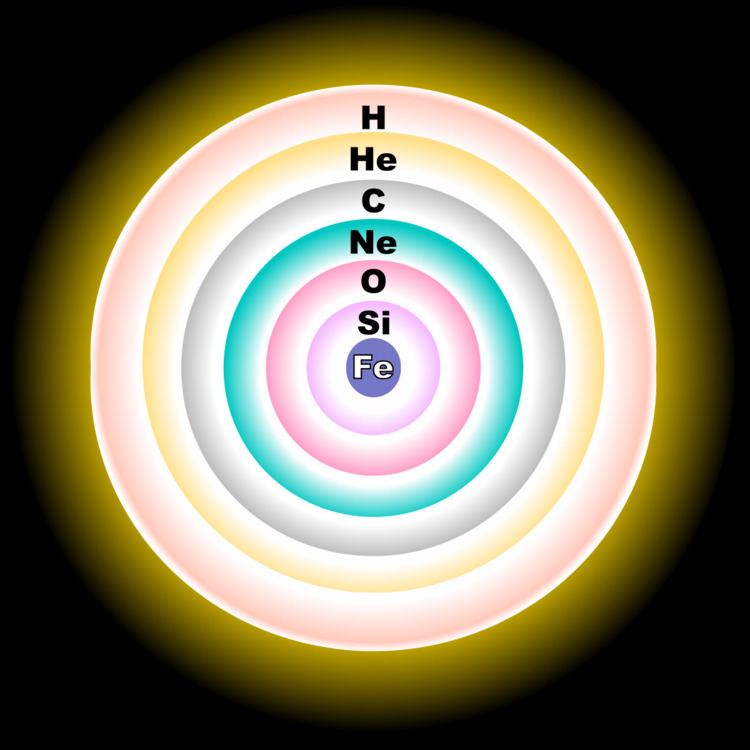 | ||
99.76% is stable with 8 neutrons 0.04% is stable with 9 neutrons 0.20% is stable with 10 neutrons Standard atomic weight (Ar) [15.99903, 15.99977]Conventional: 15.999 | ||
There are three stable isotopes of oxygen (8O): 16O, 17O, and 18O. Radioactive isotopes with mass numbers from 12O to 24O have also been characterized, all short-lived, with the longest-lived being 15O with a half-life of 122.24 seconds. The shortest-lived is 12O with a half-life of 580(30)×10−24 second.
Contents
Stable isotopes
Naturally occurring oxygen is composed of three stable isotopes, 16O, 17O, and 18O, with 16O being the most abundant (99.762% natural abundance). Depending on the terrestrial source, the standard atomic weight varies within the range of [15.99903, 15.99977] (the conventional value is 15.999). Known oxygen isotopes range in mass number from 12 to 24.
The relative and absolute abundance of 16O is high because it is a principal product of stellar evolution and because it is a primary isotope, meaning it can be made by stars that were initially made exclusively of hydrogen. Most 16O is synthesized at the end of the helium fusion process in stars; the triple-alpha reaction creates 12C, which captures an additional 4He to make 16O. The neon burning process creates additional 16O.
Both 17O and 18O are secondary isotopes, meaning that their nucleosynthesis requires seed nuclei. 17O is primarily made by the burning of hydrogen into helium during the CNO cycle, making it a common isotope in the hydrogen burning zones of stars. Most 18O is produced when 14N (made abundant from CNO burning) captures a 4He nucleus, making 18O common in the helium-rich zones of stars. Approximately a billion degrees Celsius is required for two oxygen nuclei to undergo nuclear fusion to form the heavier nucleus of sulfur.
Measurements of the ratio of oxygen-18 to oxygen-16 are often used to interpret changes in paleoclimate. The isotopic composition of oxygen atoms in the Earth's atmosphere is 99.759% 16O, 0.037% 17O and 0.204% 18O. Because water molecules containing the lighter isotope are slightly more likely to evaporate and fall as precipitation, fresh water and polar ice on earth contains slightly less (0.1981%) of the heavy isotope 18O than air (0.204%) or seawater (0.1995%). This disparity allows analysis of temperature patterns via historic ice cores.
An atomic mass of 16 was assigned to oxygen prior to the definition of the unified atomic mass unit based upon 12C. Since physicists referred to 16O only, while chemists meant the naturally-abundant mixture of isotopes, this led to slightly different mass scales between the two disciplines.
Radioisotopes
Fourteen radioisotopes have been characterized, with the most stable being 15O with a half-life of 122.24 s and 14O with a half-life of 70.606 s. All of the remaining radioactive isotopes have half-lives that are less than 27 s and the majority of these have half-lives that are less than 83 milliseconds (ms). For example, 24O has a half-life of 61 ms. The most common decay mode for isotopes lighter than the stable isotopes is β+ decay (to nitrogen) and the most common mode after is β− decay (to fluorine).
Oxygen-13
Oxygen-13 is an unstable isotope of oxygen. It consists of 8 protons and electrons, and 5 neutrons. It has a spin of 3/2-, and a half-life of 8.58 ms. Its atomic mass is 13.0248 Da. It decays to nitrogen-13 by electron capture, and has a decay energy of 17.765 MeV. Its parent nuclide is fluorine-14.
Oxygen-15
Oxygen-15 is an isotope of oxygen, frequently used in positron emission tomography, or PET imaging. It has 8 protons, 7 neutrons, and 8 electrons. The total atomic mass is 15.0030654 amu. It has a half-life of 122.24 seconds. Oxygen-15 is synthesized through deuteron bombardment of nitrogen-14 using a cyclotron.
List of isotopes
Oxygen isotopes with 25–28 nucleons exist for less than 1 microsecond, since they are beyond the neutron drip line.
